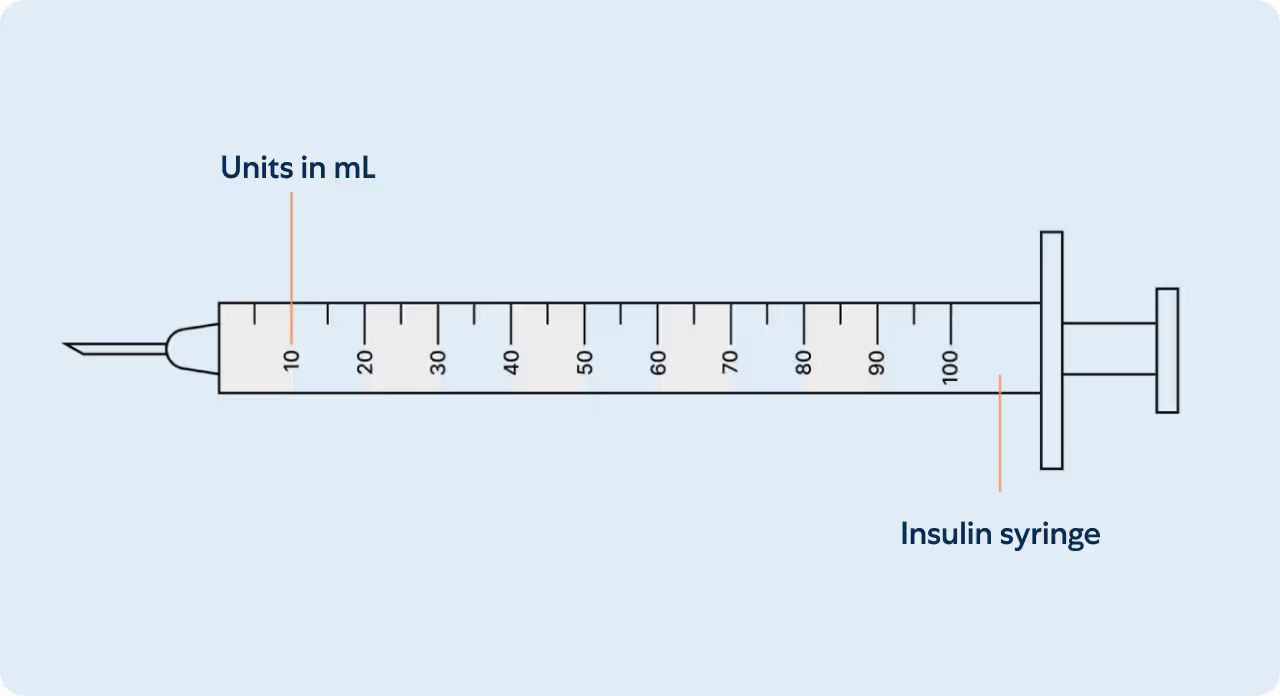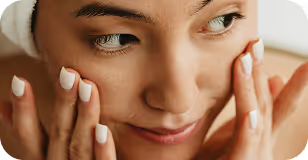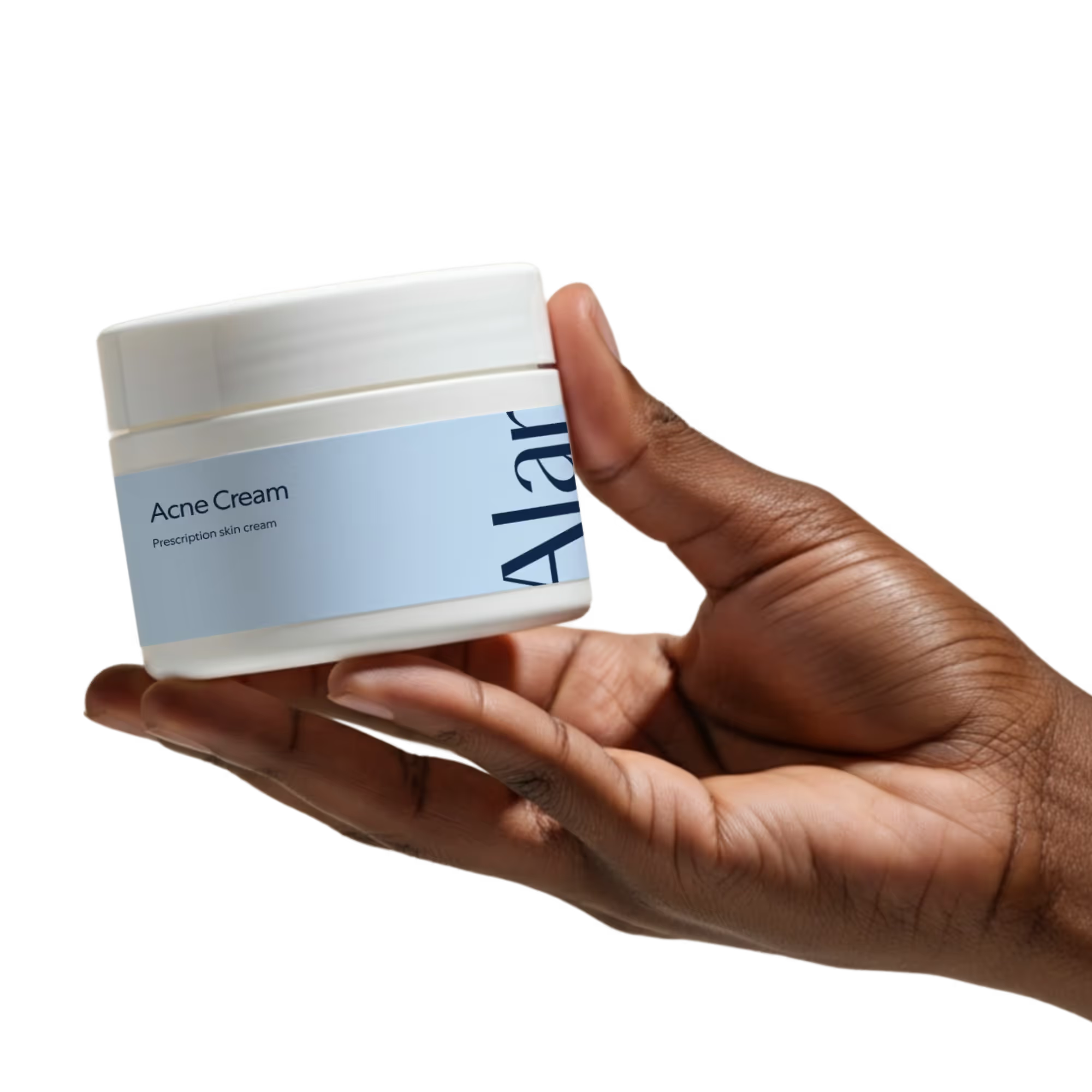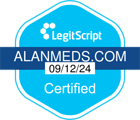Storage
Store at room temperature (68°F to 77°F / 20°C to 25°C). Keep tightly closed and away from direct sunlight and heat.
Instructions
This information is intended for individuals who have been prescribed a topical acne cream containing Tretinoin 0.1% and Clindamycin 2% by their Alan Health provider.
This prescription helps clear and prevent acne by combining a retinoid (Tretinoin) that promotes skin cell turnover with an antibiotic (Clindamycin) to reduce acne-causing bacteria.
How to Use Acne Cream:
- Apply a pea-sized amount to clean, dry skin once daily at night.
- If you’re new to retinoids, start with every other night or 2–3 times per week, then gradually increase to nightly use as tolerated.
- Wait 1–2 minutes, then apply a gentle oil-free moisturizer
Additional recommendations:
- Use sunscreen daily. Tretinoin increases sun sensitivity and risk of sunburn.
- Avoid applying near the eyes, lips, and mucous membranes.
- If dryness, peeling, or irritation occurs, reduce frequency or apply over moisturizer to buffer the skin.
Missed Dose? If you forget to apply your cream, skip the missed application and continue with your usual schedule. Do not apply extra to make up for it.
Understanding your insulin syringe

Measuring your dose
Insulin syringes are used for subcutaneous injections. They are marked in Units on the insulin syringe barrel (see illustration). Insulin syringes facilitate the precise measurement of tiny amounts of liquids which are ideal for medications such as insulin that require small and accurate dosing. Unit marks are also expressed in mL’s and can be interchangeably referenced. A prescriber may write a prescription in Units or in mL’s.
Within the amount of liquid is the prescribed mg dosage of your medication (see mg chart). Milligrams (mg) is not an amount of liquid, but rather the amount of drug that is within. The conversion between units and milligrams varies depending on the concentration of the product being used.
What can I expect?
{{what-to-expect-acne-cream}}
Safety information
The most common side effects are skin dryness, peeling, redness, and mild irritation, especially during early use.
In rare cases, side effects include severe burning, swelling, or signs of an allergic reaction such as rash or difficulty breathing. Stop use and seek immediate medical care if these occur.
A full list of side effects can be found here.
Do not use this product if you are currently pregnant, breastfeeding, or plan to become pregnant or breastfeed without consulting a qualified healthcare provider.
Note: The above statements have not been evaluated by the Food and Drug Administration. This product is not intended to diagnose, treat, cure, or prevent any disease.
Frequently Asked Questions
What is Alan Health’s Acne Cream?
Our Acne Cream blends Tretinoin 0.1% and Clindamycin 2% in a prescription-strength topical formula designed to treat breakouts, reduce inflammation, and support clearer skin over time.
When should I notice clearer skin?
Most people begin noticing visible improvements between 8 and 12 weeks. Early on, your skin may feel drier or experience mild purging as it adjusts. With consistent use, you can expect fewer breakouts, smoother texture, and reduced redness over time.
Learn more about how our Acne Cream works, and what to expect, here.
Any sun precautions I should take?
Yes—tretinoin increases sun sensitivity. Use daily sunscreen (SPF 30+), wear protective clothing, and limit sun exposure, especially during the first few weeks
Can I wear makeup after applying?
Yes—wait 20–30 minutes after applying the acne cream so it fully absorbs before applying moisturizer or makeup.
Can I use it during pregnancy or breastfeeding?
No. Tretinoin is contraindicated during pregnancy and nursing—always check with your provider before use.
How do I manage dryness or irritation?
Start with every-other-night use and add a basic moisturizer. Use gentle cleansers and avoid other strong actives until your skin adjusts.
Does it help with acne scars or dark spots?
Yes—tretinoin helps fade post-acne hyperpigmentation and smooth uneven texture by boosting skin renewal and collagen production.
Can I use this with other acne products?
It's best to avoid combining this cream with other strong actives like benzoyl peroxide, AHAs, or exfoliants, especially in the first few weeks. Stick to a gentle cleanser and moisturizer unless your provider advises otherwise.
Additional support
For details about your medication and dosing, please log in to your patient portal. Your physician is here to help with any medical questions. If you are experiencing a medical emergency, call 911 right away.













